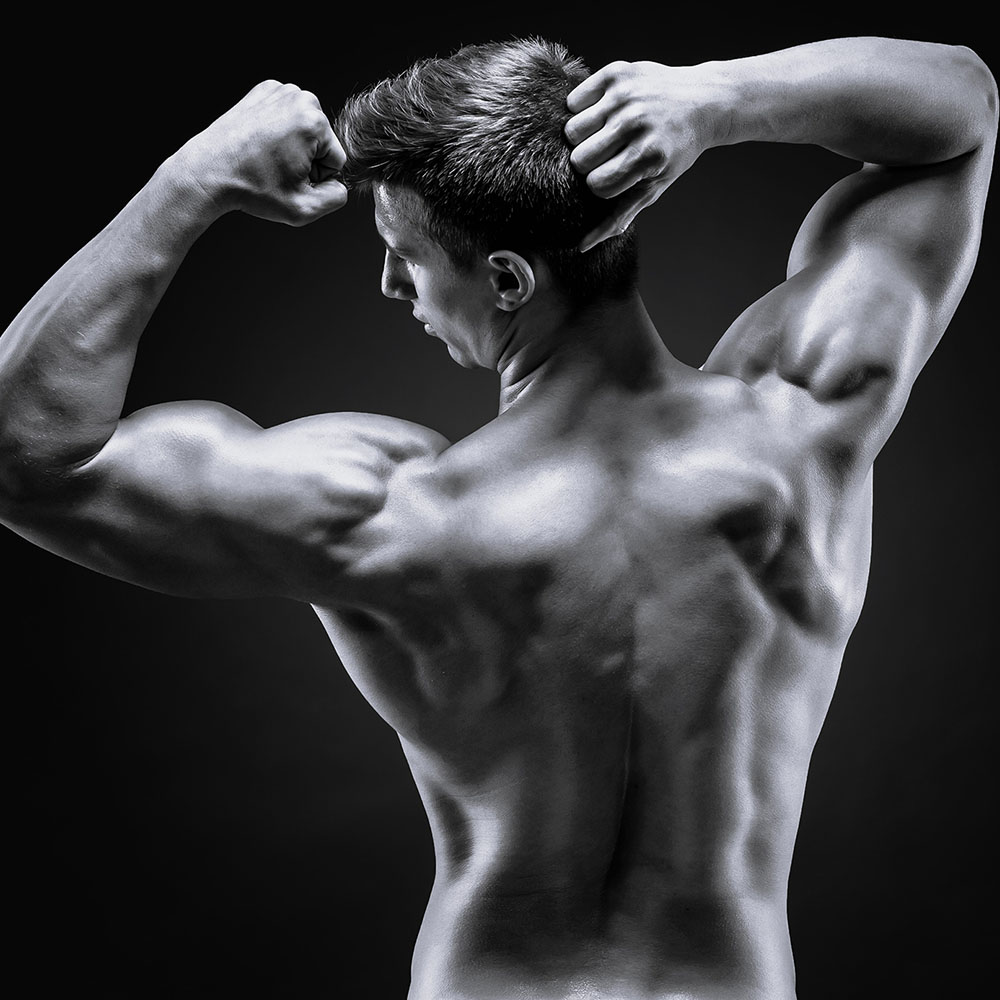Pull-Ups (Wide Grip, Close Grip):
Type: Bodyweight Exercise
Muscles Targeted: Latissimus Dorsi (Lats), Rhomboids, Trapezius, Biceps, Forearms
Equipment: Pull-Up Bar or Monkey Bars
Level: Beginner to Advanced
Wide Grip Pull-Ups:
Instructions:
Grab the pull-up bar with your palms facing away from you (pronated grip) and your hands placed slightly wider than shoulder-width apart.
Hang freely with your arms fully extended, and your feet off the ground.
Engage your core muscles and squeeze your shoulder blades together.
Pull your body upward by flexing your elbows and driving your elbows down and back.
Continue pulling until your chin is above the bar.
Pause briefly at the top, then slowly lower your body back to the starting position with control.
Repeat for the desired number of repetitions.
Close Grip Pull-Ups:
Instructions:
Grab the pull-up bar with your palms facing away from you (pronated grip) and your hands placed shoulder-width apart or slightly closer.
Hang freely with your arms fully extended, and your feet off the ground.
Engage your core muscles and squeeze your shoulder blades together.
Pull your body upward by flexing your elbows and driving them down and back.
Continue pulling until your chin is above the bar.
Pause briefly at the top, then slowly lower your body back to the starting position with control.
Repeat for the desired number of repetitions.
Neutral Grip Pull-Ups:
Instructions:
Grab the pull-up bar with your palms facing each other (neutral grip) using handles or parallel bars.
Hang freely with your arms fully extended, and your feet off the ground.
Engage your core muscles and squeeze your shoulder blades together.
Pull your body upward by flexing your elbows and driving them down and back.
Continue pulling until your chin is above the bar.
Pause briefly at the top, then slowly lower your body back to the starting position with control.
Repeat for the desired number of repetitions.
Tips:
Maintain proper form throughout the exercise, avoiding excessive swinging.
Engage your core muscles to stabilize your body during the movement.
Control the descent and avoid using momentum to ensure an effective workout.
If you’re new to pull-ups or find them challenging, you can start with assisted pull-up variations using resistance bands or a pull-up assist machine.
Gradually increase the difficulty by adding weight or progressing to more advanced variations as you become stronger.
Note: If you have any existing shoulder or back issues, it is advisable to consult with a qualified fitness professional or healthcare provider before attempting pull-ups or any new exercise routine.
Chin-Ups:
Type: Bodyweight Exercise
Muscles Targeted: Biceps, Latissimus Dorsi (Lats), Rhomboids, Trapezius, Forearms
Equipment: Pull-Up Bar or Monkey Bars
Level: Beginner to Advanced
Instructions:
Grab the pull-up bar with an underhand grip (supinated grip), with your palms facing towards you and your hands placed shoulder-width apart or slightly closer.
Hang freely with your arms fully extended, and your feet off the ground.
Engage your core muscles and squeeze your shoulder blades together.
Pull your body upward by flexing your elbows and driving them down and back.
Continue pulling until your chin is above the bar.
Pause briefly at the top, then slowly lower your body back to the starting position with control.
Repeat for the desired number of repetitions.
Tips:
Keep your body straight and avoid swinging or using momentum to lift yourself.
Focus on initiating the movement with your back and biceps, rather than relying solely on your arms.
Engage your core muscles to maintain stability throughout the exercise.
If you find chin-ups challenging, you can start with assisted variations using resistance bands or a pull-up assist machine.
Gradually increase the difficulty by reducing assistance or progressing to unassisted chin-ups as you become stronger.
Don’t rush the movement. Maintain control during both the ascent and descent phases.
Remember to breathe naturally throughout the exercise, exhaling as you pull yourself up and inhaling as you lower down.
Lat Pulldowns:
Type: Resistance Exercise
Muscles Targeted: Latissimus Dorsi (Lats), Rhomboids, Trapezius, Biceps
Equipment: Lat Pulldown Machine or Cable Machine
Level: Beginner to Advanced
Instructions:
Adjust the thigh pad and knee pad on the lat pulldown machine to ensure proper positioning and stability.
Sit on the machine with your knees secured under the knee pad, and your feet flat on the ground.
Grab the wide bar attachment or the handles with an overhand grip (pronated grip), slightly wider than shoulder-width apart.
Keep your chest lifted, shoulders relaxed, and maintain a slight arch in your lower back.
Lean back slightly while maintaining proper posture.
Pull the bar down towards your upper chest by engaging your lats and squeezing your shoulder blades together.
Focus on driving your elbows down and back as you bring the bar towards your chest.
Pause briefly at the bottom of the movement, feeling the contraction in your back muscles.
Slowly release the bar back up to the starting position with control, fully extending your arms.
Repeat for the desired number of repetitions.
Tips:
Avoid using momentum or excessive swinging during the exercise. Maintain control throughout the movement.
Engage your core muscles to stabilize your body during the exercise.
Breathe out as you pull the bar down and breathe in as you release it back up.
Keep your chest lifted and avoid arching your lower back excessively.
If using a cable machine, you can perform lat pulldowns by attaching a straight bar or using various grip attachments.
Adjust the weight to a level that challenges you while still allowing you to maintain proper form.
As you become stronger, you can progressively increase the weight or try different grip variations to target your muscles from various angles.
Lat Pulldowns (Wide Grip):
Type: Resistance Exercise
Muscles Targeted: Latissimus Dorsi (Lats), Rhomboids, Trapezius, Biceps
Equipment: Lat Pulldown Machine or Cable Machine
Level: Beginner to Advanced
Instructions:
Adjust the thigh pad and knee pad on the lat pulldown machine to ensure proper positioning and stability.
Sit on the machine with your knees secured under the knee pad, and your feet flat on the ground.
Grab the wide bar attachment with an overhand grip (pronated grip), wider than shoulder-width apart.
Keep your chest lifted, shoulders relaxed, and maintain a slight arch in your lower back.
Lean back slightly while maintaining proper posture.
Pull the bar down towards your upper chest by engaging your lats and squeezing your shoulder blades together.
Focus on driving your elbows down and back as you bring the bar towards your chest.
Pause briefly at the bottom of the movement, feeling the contraction in your back muscles.
Slowly release the bar back up to the starting position with control, fully extending your arms.
Repeat for the desired number of repetitions.
Lat Pulldowns (Close Grip):
Type: Resistance Exercise
Muscles Targeted: Latissimus Dorsi (Lats), Rhomboids, Trapezius, Biceps
Equipment: Lat Pulldown Machine or Cable Machine
Level: Beginner to Advanced
Instructions:
Adjust the thigh pad and knee pad on the lat pulldown machine to ensure proper positioning and stability.
Sit on the machine with your knees secured under the knee pad, and your feet flat on the ground.
Grab the close grip attachment with an overhand grip (pronated grip), slightly closer than shoulder-width apart.
Keep your chest lifted, shoulders relaxed, and maintain a slight arch in your lower back.
Lean back slightly while maintaining proper posture.
Pull the bar down towards your upper chest by engaging your lats and squeezing your shoulder blades together.
Focus on driving your elbows down and back as you bring the bar towards your chest.
Pause briefly at the bottom of the movement, feeling the contraction in your back muscles.
Slowly release the bar back up to the starting position with control, fully extending your arms.
Repeat for the desired number of repetitions.
Lat Pulldowns (Underhand Grip):
Type: Resistance Exercise
Muscles Targeted: Latissimus Dorsi (Lats), Rhomboids, Trapezius, Biceps
Equipment: Lat Pulldown Machine or Cable Machine
Level: Beginner to Advanced
Instructions:
Adjust the thigh pad and knee pad on the lat pulldown machine to ensure proper positioning and stability.
Sit on the machine with your knees secured under the knee pad, and your feet flat on the ground.
Grab the close grip attachment with an underhand grip (supinated grip), slightly closer than shoulder-width apart.
Keep your chest lifted, shoulders relaxed, and maintain a slight arch in your lower back.
Lean back slightly while maintaining proper posture.
Pull the bar down towards your upper chest by engaging your lats and squeezing your shoulder blades together.
Focus on driving your elbows down and back as you bring the bar towards your chest.
Pause briefly at the bottom of the movement, feeling the contraction in your back muscles.
Slowly release the bar back up to the starting position with control, fully extending your arms.
Repeat for the desired number of repetitions.
Note: Adjust the weight to a level that challenges you while still allowing you to maintain proper form. If using a cable machine, you can perform similar variations by attaching different grip handles. Ensure proper technique and consult with a qualified fitness professional if you need assistance or have any concerns.
Assisted Pull-Up Machine:
Type: Resistance Exercise
Muscles Targeted: Latissimus Dorsi (Lats), Rhomboids, Trapezius, Biceps
Equipment: Assisted Pull-Up Machine
Level: Beginner to Intermediate
Instructions:
Adjust the assistance level on the assisted pull-up machine according to your strength and desired level of assistance.
Stand on the foot platform or kneel on the knee pad, depending on the design of the machine.
Place your hands on the pull-up handles with an overhand grip (pronated grip), slightly wider than shoulder-width apart.
Maintain proper posture, keeping your chest lifted and shoulders relaxed.
Engage your core muscles and squeeze your shoulder blades together.
Initiate the pull by bending your elbows and driving them down and back.
Pull your body upward, using the assistance provided by the machine.
Continue pulling until your chin is above the bar or as high as your strength allows.
Pause briefly at the top of the movement, feeling the contraction in your back muscles.
Slowly release the handles and lower your body back down to the starting position with control.
Repeat for the desired number of repetitions.
Assisted Pull-Up Resistance Band:
Type: Resistance Exercise
Muscles Targeted: Latissimus Dorsi (Lats), Rhomboids, Trapezius, Biceps
Equipment: Resistance Band
Level: Beginner to Intermediate
Instructions:
Attach a resistance band securely to a pull-up bar or sturdy anchor point above you.
Place one or both feet in the resistance band, depending on the desired level of assistance.
Hang from the pull-up bar with your hands slightly wider than shoulder-width apart, using an overhand grip (pronated grip).
Keep your chest lifted, shoulders relaxed, and maintain a slight arch in your lower back.
Engage your core muscles and squeeze your shoulder blades together.
Initiate the pull by bending your elbows and driving them down and back.
Pull your body upward, utilizing the assistance provided by the resistance band.
Continue pulling until your chin is above the bar or as high as your strength allows.
Pause briefly at the top of the movement, feeling the contraction in your back muscles.
Slowly release the tension in the resistance band and lower your body back down to the starting position with control.
Repeat for the desired number of repetitions.
Tips:
Choose an assistance level on the assisted pull-up machine or resistance band that allows you to perform the exercise with proper form and a challenging but manageable level of effort.
Focus on engaging your back muscles and avoiding excessive swinging or use of momentum.
Control the descent phase of the exercise and avoid completely relaxing your muscles at the bottom position.
Gradually decrease the assistance level or progress to unassisted pull-ups as you gain strength and improve your technique.
Note: Proper form and technique are crucial to get the most out of these exercises and prevent injuries. If you’re unsure about the proper setup or execution, consider seeking guidance from a qualified fitness professional.
Bent-Over Rows (Barbell – Palms Down):
Type: Resistance Exercise
Muscles Targeted: Latissimus Dorsi (Lats), Rhomboids, Trapezius, Biceps, Forearms
Equipment: Barbell, Weight Plates
Level: Beginner to Advanced
Instructions:
Stand with your feet shoulder-width apart, holding a barbell in front of you with an overhand grip (palms facing down), slightly wider than shoulder-width apart.
Bend your knees slightly and hinge forward at the hips, keeping your back straight and parallel to the ground. Maintain a neutral spine position.
Engage your core muscles and keep your shoulders pulled back and down.
With your arms fully extended, pull the barbell up towards your lower chest by driving your elbows back, keeping them close to your body.
Squeeze your shoulder blades together at the top of the movement and pause briefly to feel the contraction in your back muscles.
Slowly lower the barbell back down to the starting position, fully extending your arms.
Repeat for the desired number of repetitions, maintaining control throughout the movement.
Bent-Over Rows (Barbell – Palms Up):
Type: Resistance Exercise
Muscles Targeted: Latissimus Dorsi (Lats), Rhomboids, Trapezius, Biceps, Forearms
Equipment: Barbell, Weight Plates
Level: Beginner to Advanced
Instructions:
Stand with your feet shoulder-width apart, holding a barbell in front of you with an underhand grip (palms facing up), slightly wider than shoulder-width apart.
Bend your knees slightly and hinge forward at the hips, keeping your back straight and parallel to the ground. Maintain a neutral spine position.
Engage your core muscles and keep your shoulders pulled back and down.
With your arms fully extended, pull the barbell up towards your lower chest by driving your elbows back, keeping them close to your body.
Squeeze your shoulder blades together at the top of the movement and pause briefly to feel the contraction in your back muscles.
Slowly lower the barbell back down to the starting position, fully extending your arms.
Repeat for the desired number of repetitions, maintaining control throughout the movement.
Bent-Over Rows (Dumbbells):
Type: Resistance Exercise
Muscles Targeted: Latissimus Dorsi (Lats), Rhomboids, Trapezius, Biceps, Forearms
Equipment: Dumbbells
Level: Beginner to Advanced
Instructions:
Stand with your feet shoulder-width apart, holding a dumbbell in each hand, palms facing your body.
Bend your knees slightly and hinge forward at the hips, keeping your back straight and parallel to the ground. Maintain a neutral spine position.
Engage your core muscles and keep your shoulders pulled back and down.
With your arms fully extended, pull the dumbbells up towards your lower chest by driving your elbows back, keeping them close to your body.
Squeeze your shoulder blades together at the top of the movement and pause briefly to feel the contraction in your back muscles.
Slowly lower the dumbbells back down to the starting position, fully extending your arms.
Repeat for the desired number of repetitions, maintaining control throughout the movement.
Tips:
Focus on pulling with your back muscles rather than relying solely on your arms.
Keep your elbows close to your body throughout the movement to engage your back muscles effectively.
Maintain a stable and neutral spine position to avoid excessive strain on your lower back.
Control the weight throughout the exercise, both during the pulling and lowering phases.
Use a weight that challenges you while still allowing you to maintain proper form and technique.
Note: If you have any existing back issues or concerns, it is advisable to consult with a qualified fitness professional or healthcare provider before attempting bent-over rows or any new exercise routine.
One-Arm Row:
Type: Resistance Exercise
Muscles Targeted: Latissimus Dorsi (Lats), Rhomboids, Trapezius, Biceps, Forearms
Equipment: Dumbbell, Bench
Level: Beginner to Advanced
Instructions:
Place a bench parallel to a dumbbell rack or weight plates.
Stand on the side of the bench with your feet shoulder-width apart and knees slightly bent.
Hold a dumbbell in one hand, allowing it to hang at arm’s length toward the floor.
Place your opposite knee and hand on the bench, creating a three-point stance.
Keep your supporting arm extended, your back straight, and your core engaged.
Pull the dumbbell upward toward your lower ribs by driving your elbow back and squeezing your shoulder blade toward your spine.
Focus on pulling with your back muscles while keeping your torso stable and avoiding twisting or rotating.
Pause briefly at the top of the movement, feeling the contraction in your back muscles.
Slowly lower the dumbbell back down to the starting position, fully extending your arm.
Repeat for the desired number of repetitions on one side before switching to the other side.
Tips:
Maintain proper alignment and stability throughout the exercise.
Keep your back straight and avoid rounding or arching your spine.
Focus on pulling with your back muscles rather than relying solely on your arm strength.
Keep your elbow close to your body throughout the movement to engage your back muscles effectively.
Control the weight throughout the exercise, both during the pulling and lowering phases.
Choose a weight that challenges you while still allowing you to maintain proper form and technique.
T-Bar Rows:
Type: Resistance Exercise
Muscles Targeted: Latissimus Dorsi (Lats), Rhomboids, Trapezius, Biceps, Forearms
Equipment: T-Bar Row Machine or T-Bar Handle with Weight Plates
Level: Beginner to Advanced
Instructions:
Position the T-Bar row machine or secure a T-Bar handle into a corner or landmine attachment.
Load the appropriate weight plates onto the machine or handle.
Stand with your feet shoulder-width apart, facing the machine or attachment.
Bend your knees slightly and hinge forward at the hips, keeping your back straight and parallel to the ground. Maintain a neutral spine position.
Reach forward and grip the handles or the T-Bar with both hands, palms facing each other (neutral grip).
With your arms fully extended, engage your core muscles and keep your shoulders pulled back and down.
Pull the weight up towards your lower chest by driving your elbows back, keeping them close to your body.
Squeeze your shoulder blades together at the top of the movement and pause briefly to feel the contraction in your back muscles.
Slowly lower the weight back down, fully extending your arms.
Repeat for the desired number of repetitions, maintaining control throughout the movement.
Tips:
Keep your back straight and avoid rounding or arching your spine.
Focus on pulling with your back muscles rather than relying solely on your arm strength.
Keep your elbows close to your body throughout the movement to engage your back muscles effectively.
Control the weight throughout the exercise, both during the pulling and lowering phases.
Avoid using excessive momentum or swinging your body to lift the weight.
Choose a weight that challenges you while still allowing you to maintain proper form and technique.
If using a T-Bar handle with weight plates, you can also perform T-Bar rows by straddling the handle and gripping it with one hand at a time.
Note: If you have any existing back issues or concerns, it is advisable to consult with a qualified fitness professional or healthcare provider before attempting T-Bar rows or any new exercise routine.
Seated Cable Rows:
Type: Resistance Exercise
Muscles Targeted: Latissimus Dorsi (Lats), Rhomboids, Trapezius, Biceps, Forearms
Equipment: Cable Machine with Seated Row Attachment, Various Handles or Bars
Instructions:
Adjust the seated row machine’s height, seat position, and foot placement according to your comfort.
Sit on the machine with your feet resting against the footrests or on the floor, knees slightly bent.
Grasp the handle or bar attached to the cable machine with your hands, ensuring a comfortable grip.
Sit up straight with your back perpendicular to the floor, maintaining a neutral spine position.
Begin with your arms extended in front of you, shoulders relaxed, and a slight bend in your elbows.
Engage your core muscles and keep your shoulders pulled back and down.
Initiate the movement by driving your elbows back, squeezing your shoulder blades together.
Pull the handle or bar towards your torso, focusing on contracting your back muscles.
Keep your torso stable and avoid excessive swinging or using momentum to lift the weight.
Squeeze your back muscles at the fully contracted position and hold for a moment.
Slowly extend your arms forward, returning to the starting position with control.
Repeat for the desired number of repetitions.
Variations:
Different Hand Positions:
Overhand Grip (Palms facing down): Grasp the handle or bar with your palms facing down. This hand position emphasizes the engagement of your lats.
Underhand Grip (Palms facing up): Grasp the handle or bar with your palms facing up. This hand position places more emphasis on the engagement of your biceps and forearms.
Neutral Grip (Palms facing each other): Grasp the handle or V-bar with your palms facing each other. This hand position provides a balance between lat engagement and bicep involvement.
Bar Types:
Straight Bar: Use a straight bar attachment, grasping it with the desired hand position (overhand, underhand, or neutral grip).
V-Bar: Use a V-shaped handle attachment, placing your hands in a neutral grip position.
Level: Beginner to Advanced
Tips:
Maintain proper posture throughout the exercise, keeping your back straight and avoiding excessive leaning or rounding.
Focus on initiating the movement from your back muscles, rather than relying solely on your arms.
Keep your elbows close to your body and avoid excessive shoulder shrugging.
Control the weight throughout the exercise, both during the pulling and returning phases.
Choose a weight that challenges you while still allowing you to maintain proper form and technique.
Experiment with different hand positions and bar types to target different muscles and add variety to your workout routine.
Deadlifts:
Type: Compound Exercise
Muscles Targeted: Hamstrings, Glutes, Lower Back, Quadriceps, Calves, Forearms
Equipment: Barbell, Dumbbells, or Kettlebells
Level: Beginner to Advanced
Instructions:
Begin by standing with your feet hip-width apart, with the barbell on the floor in front of you. Your toes can be slightly turned out.
Bend down and grip the barbell with an overhand grip (palms facing down) or an alternate grip (one palm facing up and the other down) slightly wider than shoulder-width apart.
Lower your hips and position your shoulders directly over or slightly in front of the barbell. Maintain a neutral spine position with your back flat and your core engaged.
Take a deep breath, brace your core, and lift the barbell off the ground by driving through your heels and pushing your hips forward.
Keep the barbell close to your body as you stand up, ensuring that your shoulders and hips rise together. Maintain a straight back throughout the movement.
Once you are in a fully upright position, with your hips and knees fully extended, pause briefly to squeeze your glutes.
To lower the barbell back down, hinge at your hips, push your glutes back, and bend your knees while keeping your back flat.
Lower the barbell in a controlled manner, keeping it close to your body, until it touches the floor or hovers just above it.
Repeat for the desired number of repetitions, maintaining control and proper form throughout the exercise.
Tips:
Keep your core engaged throughout the exercise to provide stability and protect your lower back.
Maintain a neutral spine and avoid rounding or arching your back.
Keep your shoulder blades retracted (pulled back) throughout the movement.
Focus on driving through your heels and engaging your glutes to lift the weight.
Avoid using excessive momentum or jerking motions. Lift the weight in a controlled manner.
Choose a weight that challenges you while still allowing you to maintain proper form and technique.
Warm up properly before performing heavy deadlifts, especially if you are lifting near your maximum weight.
If you are a beginner or new to deadlifts, consider seeking guidance from a qualified fitness professional to ensure proper technique and form.
Note: Deadlifts are a highly effective exercise but require proper form and technique to minimize the risk of injury. If you have any existing back issues or concerns, it is advisable to consult with a qualified fitness professional or healthcare provider before attempting deadlifts or any new exercise routine.
Stiff-Legged or Romanian Deadlifts:
Type: Resistance Exercise
Muscles Targeted: Hamstrings, Glutes, Lower Back
Equipment: Barbell, Dumbbells, or Kettlebells
Level: Beginner to Advanced
Instructions:
Begin by standing with your feet hip-width apart, holding a barbell, dumbbells, or kettlebells in front of your thighs with an overhand grip (palms facing your body).
Engage your core muscles and maintain a slight bend in your knees throughout the exercise.
Initiate the movement by hinging at your hips, pushing your glutes back and allowing your torso to lean forward while keeping your back straight.
As you hinge forward, allow the weight to slide down your thighs, maintaining a slight bend in your knees while emphasizing the stretch in your hamstrings.
Continue lowering the weight until you feel a comfortable stretch in your hamstrings or until your torso is parallel to the ground. Be careful not to round your lower back.
Pause briefly at the bottom of the movement, focusing on feeling the tension in your hamstrings and glutes.
Engage your hamstrings and glutes as you reverse the movement, raising your torso back up to the starting position.
Keep your back straight and avoid using your lower back to lift the weight. The movement should be driven by the hip hinge.
Repeat for the desired number of repetitions, maintaining control throughout the exercise.
Tips:
Keep your core engaged and maintain a neutral spine throughout the exercise.
Focus on feeling the stretch and tension in your hamstrings as you lower the weight, rather than reaching for the floor.
Avoid rounding your lower back or allowing your shoulders to slump forward.
Keep your knees slightly bent and your weight distributed evenly through your feet.
If using a barbell, maintain a grip width that feels comfortable and allows you to maintain proper form.
Use a weight that challenges you while still allowing you to maintain proper technique.
Start with lighter weights and gradually increase the load as you become more comfortable with the exercise.
If you have any existing lower back issues or concerns, it is advisable to consult with a qualified fitness professional or healthcare provider before attempting stiff-legged or Romanian deadlifts.
Note: The terms “stiff-legged deadlifts” and “Romanian deadlifts” are sometimes used interchangeably, but there may be slight variations in technique and emphasis. It’s essential to focus on proper form and find the variation that works best for your body and goals.
Renegade Rows:
Type: Compound Exercise
Muscles Targeted: Back (Lats, Rhomboids), Shoulders, Core, Arms
Equipment: Dumbbells or Kettlebells, Exercise Mat
Level: Intermediate to Advanced
Instructions:
Start in a high plank position with your hands gripping a pair of dumbbells or kettlebells. Ensure your hands are directly under your shoulders, and your body forms a straight line from head to heels.
Set your feet slightly wider than hip-width apart to provide a stable base.
Brace your core muscles and maintain a strong and stable plank position throughout the exercise.
Initiate the movement by retracting your shoulder blades, pulling one dumbbell off the ground and rowing it towards your hip while keeping your elbow close to your body.
As you row one dumbbell, ensure that your body remains stable and parallel to the ground, avoiding any twisting or excessive movement.
Lower the dumbbell back to the starting position with control, then repeat the row with the opposite arm.
Continue alternating rows between the left and right arms for the desired number of repetitions.
Maintain a steady and controlled pace throughout the exercise, avoiding any jerking or swinging motions.
Tips:
Keep your core engaged and your body stable throughout the movement to prevent excessive rotation or sagging of the hips.
Focus on pulling your shoulder blades together during each row to fully engage the back muscles.
Avoid lifting the dumbbell too high, as this can strain the shoulder joint. Aim to row the weight towards your hip.
Choose a weight that challenges you while still allowing you to maintain proper form and technique.
If you’re new to renegade rows, start with lighter weights and gradually increase the load as you become more comfortable and confident with the exercise.
If you’re unable to maintain a stable plank position with the dumbbells, you can modify the exercise by performing the rows from a knee plank position instead.
Incorporate renegade rows into your upper body or back-focused workouts, or as part of a full-body strength training routine.
Note: Renegade rows require a certain level of upper body and core strength, so it’s important to have a solid foundation of strength and stability before attempting this exercise. If you have any existing shoulder or back issues or concerns, it is advisable to consult with a qualified fitness professional or healthcare provider before attempting renegade rows or any new exercise routine.






